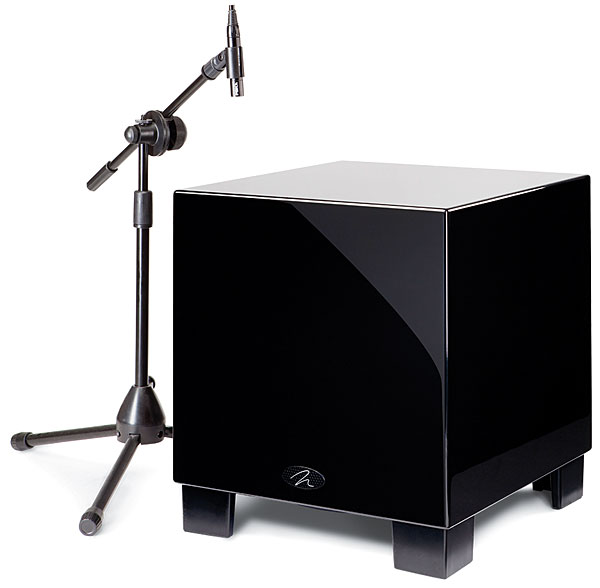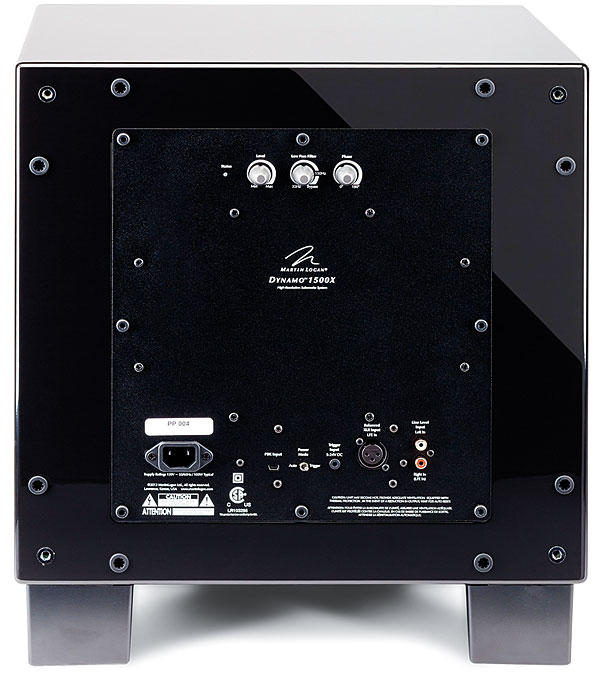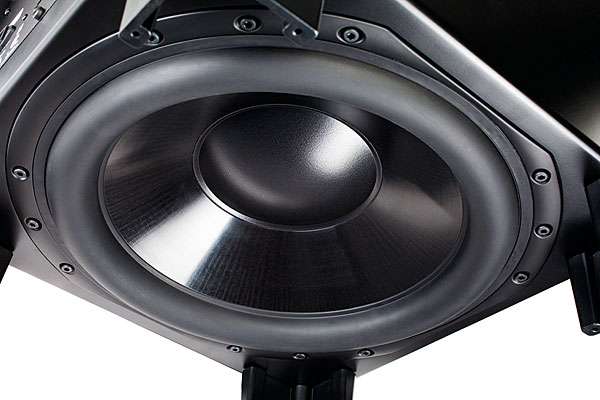MartinLogan Motion 60XT Speaker System Review Page 2

Getting the PBK to work properly proved to be a challenge. With its clunky software interface and its requirement for a computer with two available USB ports, the whole thing looks and feels like it was designed about 15 years ago. I had to down- load the latest version of the software from the MartinLogan Website, and even then, I needed to put in a couple of calls to the folks in Kansas for technical assistance.

The good news is that once you have jumped through the hoops required to get it running, the PBK works well, allowing you to measure the bass response at up to 10 points in the room and providing graphs of the response before and after correction. In my room, it was able to smooth out a familiar peak at around 120 hertz that I usually tackle manually with an Onix R-DES bass equalizer; the PBK was able to do it with greater precision, resulting in a very smooth and extended bottom-end response from the Dynamo 1500X. Overall, I think the idea behind the PBK is worthwhile; it just needs updating to bring it into the 21st century.
Time for Some Music
With any 5.1 speaker package, I usually begin by evaluating just the main left and right speakers as a high-end two-channel music system. With a couple of big, honking 8-inch aluminum-cone woofers covering the bottom octaves in each of the Motion 60 XTs, you won’t have to make any excuses about a lack of bass power or extension. These babies can crank it out, delivering each note of Charley Drayton’s wicked bass line on the Keith Richards track “Words of Wonder” with tuneful authority.
In addition to the technology used, one obvious difference between the Motion series and MartinLogan’s electrostatic models is that you don’t get the rear output of the dipole panels. The upshot is a sound that’s more focused yet somewhat less open than that of their dipole electrostatic brethren. You can hear this effect with drummer Steve Jordan’s rim shots on “Words of Wonder”; the dynamic impact is tremendous, but the soundstage doesn’t have quite the expansive dimensions I’d expect to hear with one of MartinLogan’s electrostatic models. Moving the speakers a bit closer together and toeing them in slightly did improve the depth somewhat, but despite MartinLogan’s marketing pitch, you’re never going to match the enveloping spatial effects of a dipole.
Killer bass, great imaging, and a huge soundstage are always fun, but I find that a balanced, transparent midrange and detailed, natural high frequencies are far more important when it comes to enjoying music. Here, the Folded Motion XT tweeter and aluminum-coned midrange driver give the Motion 60XT a clear edge, allowing great insight into the tonality and texture of each instrument. For example, the raw, dark tone of Jonny Lang’s custom Fender Thinline guitar on his Live at Montreux DVD was easy to differentiate from the sound of his bandmate’s more conventional Telecaster.

I also set up the smaller Motion 35XTs on stands as a stereo pair and found that their presentation was very similar to their floorstanding brothers’. The tonal match was pretty much spot on, just with the bottom bass octave missing and a little less dynamic swing. The 35XTs also use the bigger XT version of the Folded Motion tweeter, so you get all of the same clarity and fine detail, giving a clear window into the recording. Bookshelf speakers hijacked for surround duties tend to get lost in a system review, but at $1,200/pair, the Motion 35XT deserves respect as a great monitor-style speaker for a not-too-crazy price.
All Together Now
Putting the whole system together, I loaded up the dream scene from Inception where Leonardo DiCaprio and Ellen Page are sitting at an outdoor cafe, and everything around them starts to explode. With the Dynamo 1500X handling the thunderous bass rumble of each explosion, the Motion XT speakers were able to take all of the sounds of splintering wood and breaking glass and wrap them around the room in a seamless and effective way. I normally use bipole surround speakers, but even though the Motion 35XT is a direct-radiating box speaker, the envelopment felt complete. I’ll put this down to the excellent timbral match among all five speakers, reducing any discontinuities as the sound swept around
the room.
Summing Up
I generally find too often that a home theater system can be riddled with poor compromises when it comes to playing music; that’s
why I have completely separate systems for two-channel and multichannel listening. The MartinLogan package does a pretty convincing job of straddling that divide, working quite effectively with both music and movies when set up appropriately.
Again, at around $6,800 including the Perfect Bass Kit ($100), this complete speaker package isn’t exactly cheap, but you’re really getting a whole lot of speaker for your hard-earned money. While I don’t entirely agree with MartinLogan’s claim that the panel-like Folded Motion XT tweeter shares a com- mon design philosophy with the company’s electrostatic panels, it’s an impressive achievement in itself, giving the Motion XT speakers a decisive advantage in clarity over many conventional designs. When you couple that with the allure of the aluminum cone woofers and midrange drivers, as well as the Motion’s chic sense of styling, the overall package has great appeal. “Truth in Sound,” indeed.





























































